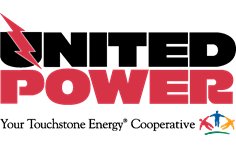Demand Rate Addresses How Members Use the System in Different Ways
It has been nearly four years since United Power adopted its current rate structure that includes an energy and demand charge. Separating demand from energy charges was implemented as a way to more fairly charge members for their electric usage and impact on the cooperative’s system. While more electric utilities are making the transition to a demand rate, United Power was among the first to introduce a demand charge across its membership. To help our members learn more about demand, we have produced numerous resources dedicated to educating members so they may make the most of the rate.
What is Demand?
Demand refers simply to the maximum electricity needed at a given time and its impact on the system. The demand charge is the total wattage of all the power being used at that highest interval and is billed as kilowatts (kW). As the cooperative gained new insights about how each meter impacts the system differently, the decision was made to utilize demand as a measurement that helps the cooperative more fairly bill members for their usage. Since some members use electricity in ways that make them more expensive to serve, demand helps to make sure everyone is paying their fair share. When the demand charge was first introduced, the majority of our members saw very little change. Most members saw only a $1–2 increase or decrease in their bill monthly.
Is Demand an Added Charge?
No. The demand charge on your monthly bill was separated from the energy charge, essentially “unbundling” the details of your energy use. A traditional “blended” energy rate combines energy usage and demand into a single charge for all members. The blended rate placed an equal burden on all members for system maintenance costs despite differences in how they use energy. Under the old, blended rate some members were paying more than they should while others were not paying enough. United Power’s current rates separate demand — billed as the highest 15-minute interval of energy usage during each billing cycle — from the energy charge so members are now more fairly billed for both their usage and impact on the system.
How To Reduce My Demand
Now that you can see the impact of both the total energy you use and your highest usage intervals, you have more control over your total bill. By reducing overall energy use with simple tips like turning off devices that aren’t in use and using a programmable thermostat, you can affect your energy charge. To lower your demand charge, avoid using multiple appliances at once. Set the delay feature on your dishwasher so it runs after all the lights are off and avoid doing laundry while the air conditioner is running.
What is the Fixed Charge?
The “fixed charge” is a line item on your monthly billing statement that all members pay regardless of how much energy they use. The fixed charge is a standard amount and covers a portion of the costs for billing, collections, member services, and metering. These services are required whether you use a lot of energy, or none at all, and all residential members pay the same amount.
You can learn more about the fixed charge and other elements of your billing statement on our Understanding Your Bill page.
Member Rate Options
United Power introduced demand with a corresponding reduction in its energy charge and most members did not experience significant changes to their monthly bills. However, you may still benefit by switching to a different rate.
The cooperative offers a variety of rate options for residential members to fit the many ways members use electricity. To ask our trusted advisors if a new rate plan is right for you, schedule a phone assessment here.
Members can find more information about United Power’s demand charge — including steps you can take to control your demand and a calculator to help understand how appliances may contribute to demand — on our Understanding Demand page.

